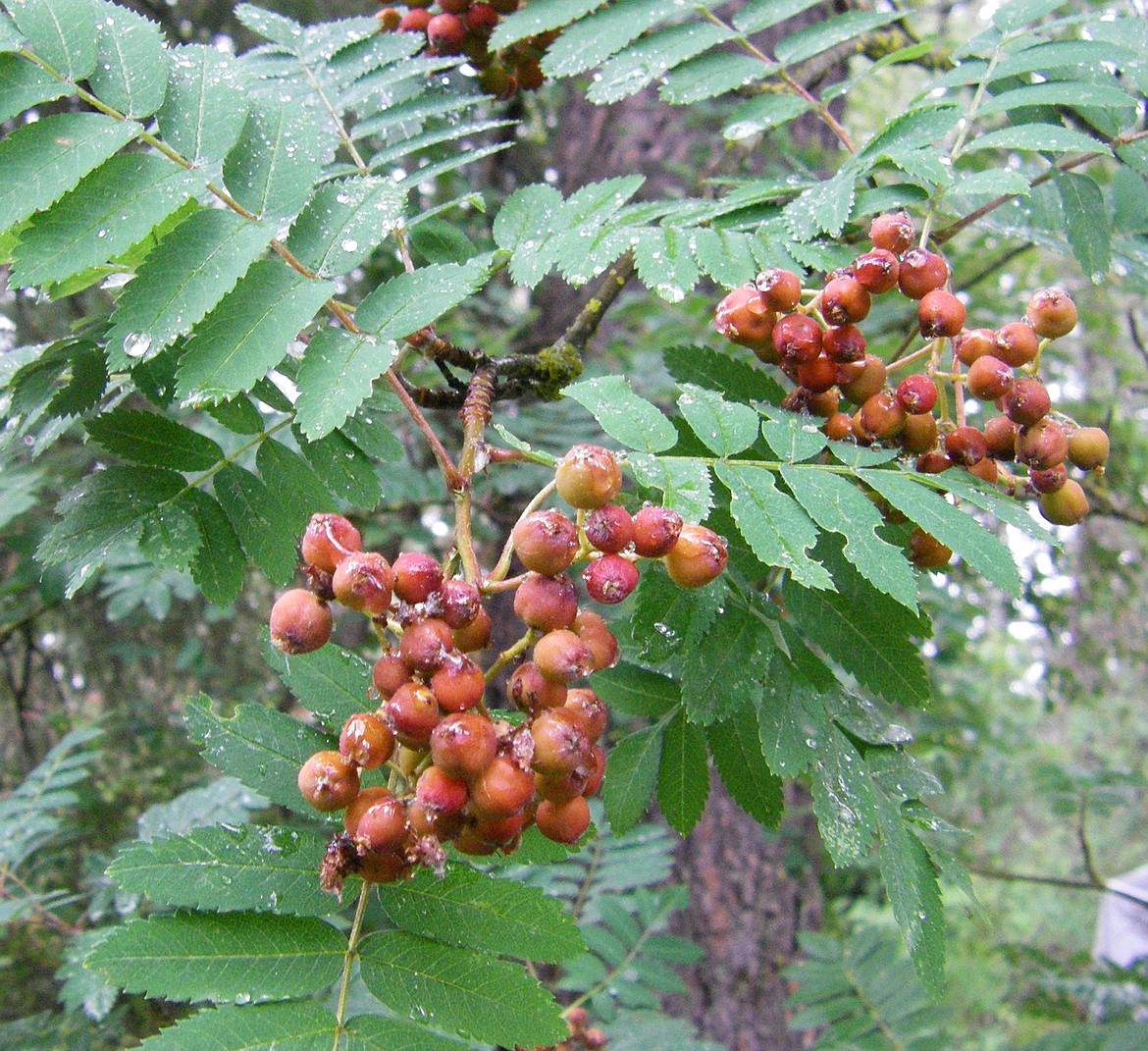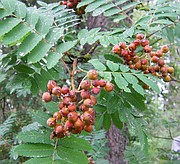Native trees offer practical, pretty, beneficial landscaping
Arbor Day activities, though subdued somewhat by the extant virus, have been observed in various ways throughout the nation and the name itself — Arbor/”tree” — determined today’s column. Trees — or rather, small trees — will star front and center in a primer for those of you seeking information on the best choices for your own use.
Since native species are the most logical choices due to their natural hardiness suited to the area, I’ll describe a few of them for those readers who may be thinking of making such a purchase.
One of my favorites, since it provides sustenance for the birds as well as beauty to the eye, is the Mountain Ash (Sorbus), pictured above. Now in full bloom with pretty white blossoms (beloved by bees and hummingbirds), mid- to late summer will offer the pictured clusters of bright red- to red-orange berries that last through much of the winter.
They beckon the migrating flocks of Waxwings and Grosbeaks that visit through summer and into the autumn. Too, their pretty notched pinnate leaves turn red and gold in the fall for extra attractiveness in the otherwise bleak snowy landscape.
For those who do not want the often messy inedible (for humans) berries, Rocky Mountain Maple (Acer glabrum) is a lovely possibility. It grows as a small to fairly tall but slim-bodied large tree and one of its benefits is that if storm or accident breaks it down, it returns as a shrub. New shoots come up from the roots to form the shrubby growth which offers all of the classic beauty of the tree. Maple leaves begin with the glorious green, through which the sun shines for lovely dappled shade — and the autumn colors of yellow, gold and red are unparalleled.
Another pretty native is our Quaking Aspen (Populus tremuloides), with its small size, fluttering heart shaped leaves that turn gold in the fall, and for-sure hardiness, it is a winner. However, don’t plant it over water lines or septic systems since its roots, seeking out water, can cause problems. This trait makes aspen perfect for planting in moist, even boggy areas.
When we of the original crew planted the then-new Arboretum, one of the small trees we chose was Staghorn Sumac (Rhus). The “furry” branches, pretty spray-like wine-red flowers add real beauty and uniqueness to a garden. Another native is its cousin Smooth Sumac (Rhus glabra) which sports the same pinnately divided leaves/leaflets, but with florets of whitish to greenish, fruiting to ornamental cone-like dry fruits.
The Red and/or Yellow Osier dogwoods, with their bright stems enlivening winter landscapes, are generally shubby, but when grown singly, mature into a more tree-like form. These are choice for small landscapes, with all-season attractiveness and the bonus of making great hedges when planted closely together. Depending on your choice, the bright red — or gold — stems provide gorgeous wintertime color.
If one prefers needled trees, our native Rocky Mountain Juniper meets the small-size requirement, and with its bonus of rugged dusty-blue “berries” is a natural, often growing into a sizeable eight to ten-foot tree. It’s adaptable to where it is located, so in a rugged mountain site, it may be charmingly twisted and windswept-looking, but straight, shapely and “piney” in a protected situation.
For those of you who are planning to purchase or otherwise obtain*a tree(s), here’s a planting “how-to” from the Arbor Day Foundation.
1. Unpack tree and soak in water 6 to 12 hours. Do NOT plant with packing materials attached to roots, and do not allow roots to dry out.
2. Dig a hole, wider than seems necessary, so the roots can spread without crowding. Remove any grass within a three-foot circular area. To aid root growth, turn soil in an area up to 3 feet in diameter.
3. Plant the tree at the same depth it stood in the nursery, without crowding the roots. Partially fill the hole, firming the soil around the lower roots. Do NOT add soil amendments.
4. Shovel in the remaining soil. It should be firmly but not tightly packed with your heel. Construct a water-holding basin around the tree. Now, give the tree plenty of water.
5. After the water has soaked in, place a 2-inch-deep protective mulch in an area three feet in diameter around the base of the tree — but NOT touching the trunk.
6. Water the tree generously every week or 10 days during the first year.
7. Containerized trees are a different matter: When transplanting, be sure to keep soil around the roots. Always handle your tree by the rootball, NOT the trunk or branches. If the ball seems rootbound (a great tangle of matted roots), help prevent root girdling by vertically cutting any roots that show tendencies to circle the rootball. Prepare a large area by digging soil as much as five times the area of the rootball (if possible).
8. Hole depth should be the same as the rootball depth, and the top of the ball should be even with the ground surface when you have placed the tree.
Water rootball to moisten, return the soil to the hole, pack firmly but NOT tightly around rootball. Water generously, check for proper soil depth, then place a 3-foot protective circle of mulch around the tree but not touching the trunk. (Leaves and/or straw are fine for mulch).
A properly planted tree will grow twice as fast and live at least twice as long as one incorrectly planted.
* If you are transplanting a tree from the wild, wait till dormancy if possible, and dig a wide (3 feet around outer boundary of limb-spread) and deep hole — making sure to get all of the taproot/major roots. NEVER dig out a blooming/blossoming tree. The shock could set them back drastically or even kill them, depending on their size.
Note: I purposely didn’t go into the many varieties of fruit trees available and whether for edible or ornamental purposes, they are always beneficial for their beauty and hardiness. Any area nursery can advise you with ideas for your personal sites and needs. Good luck!
Valle Novak writes the Country Chef and Weekend Gardener columns for the Daily Bee. She can be reached at bcdailybee@bonnercountydailybee.com. or by phone at 208-265-4688 between the hours of 8 a.m. to 7 p.m.





